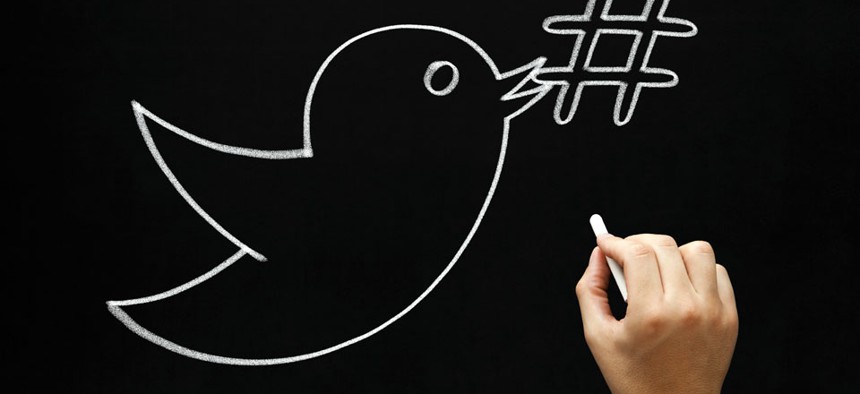In Case of Emergency, the UN Wants You to Tweet This

Ivelin Radkov/Shutterstock.com
A new U.N. report aims to set out best practices for using hashtags during emergencies.
When disaster strikes, fewer and fewer people are huddling around the TV or radio. Increasingly, they’re turning to social media.
Facebook recently launched a new feature called Safety Check that allows users in a designated crisis zone let friends and family know they’re OK with the touch of a button.
Now, the United Nations wants to make sure you’re using the right hashtag when you tweet about the next hurricane, earthquake or other disaster.
A new report from the United Nations Office for the Coordination of Humanitarian Affairs aims to set out best practices for using hashtags -- the specific words or phrases marked with the “#” symbol that denote messages of a particular topic -- during emergencies.
Why is the U.N. taking notice of such a quotidian matter as the Twitter hashtag?
“Militaries view each soldier as a sensor. This same idea of valuing the eyes, ears and opinions of community members can be used to support humanitarian response,” the report concluded.
And Twitter, with its real-time stream of user-submitted information -- often available even when other media fail -- has “the potential to supplement traditional information gathering and response reporting during large-scale emergencies,” the report concluded.
Still, during a disaster, that fast and furious scroll of tweets can be daunting to navigate. Even if people are tweeting about conditions on the ground or requesting emergency assistance, there’s no guarantee agencies or first responders are getting the information.
The authors of the report recommend standardizing three specific uses of hashtags during crises.
For one thing, agencies responsible for naming storm systems should also take a hand in help promulgating the hashtag to be used on social media.
For other disasters -- those in which it's unlikely first-response agencies will be the first to tweet about them -- they should monitor Twitter conversations and encourage a standard hashtag.
Agencies and first responders should also help differentiate between hashtags used to request immediate emergency assistance and hashtags used to report nonemergency information, such as downed power lines, closed roads and the locations of shelters.
“Each hashtag is intended to fulfill a specific role, including ensuring the continuity of information; public tracking of needs, people and supplies; and providing a platform to facilitate direct assistance,” the report stated.
Along with standardizing hashtags, the report also urged first responder agencies to encourage on-the-ground citizens to enable GPS when tweeting about disasters.
The report even goes so far as to suggest having response agencies “discuss with Twitter about automatically asking users if they would like to enable GPS when posting from a natural-disaster-affected time zone.”
For governments, another shortcoming of Twitter is something anyone who’s attempted to distill a complex thought down to a tweet would be familiar with: the 140-character length restrictions. One way around this, the report suggested, is to use infographics or other images to communicate important information.
(Image via Ivelin Radkov/Shutterstock.com)





